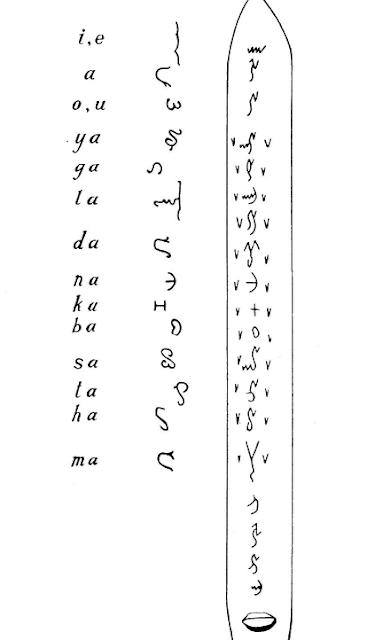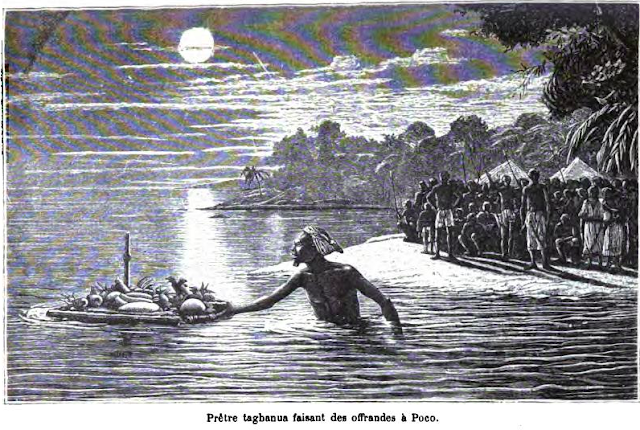The Tagbanua Script: Surat et Tagbanua

The Tagbanua script (SURAT) preserved some of the Hindu ancient writing. It is written in vertical columns reading from top to bottom and the columns following in order from right to left. The inscriptions consists of incisions in the surface of strips of bamboo. In the picture, the one on the right is the modern Tagbanua script. The middle shows the Tagalog script and the left image shows the value of the letters in Roman characters. Masikampu Ignacio "Ampun' Cursod Joya, the 14th Masikampu of the Tagbanua and IPs of Palawan, used to write this way. Reference: Peoples of the Philippines by Albert Louis Kroeber, 1876-1960. Publication date: 1919. Courtesy of University of Michigan. Attribution: Masikampo Ruben C. Joya, 18th Masikampo of the Tagbanua and IPs of Palawan Usba et Masikampo Rikizam M. Joya, MD Usba et Masikampo Ashelon M. Joya Usba et Masikampo Ruben M. Joya, II Maradja et Masikampo Redeem M. Joya

